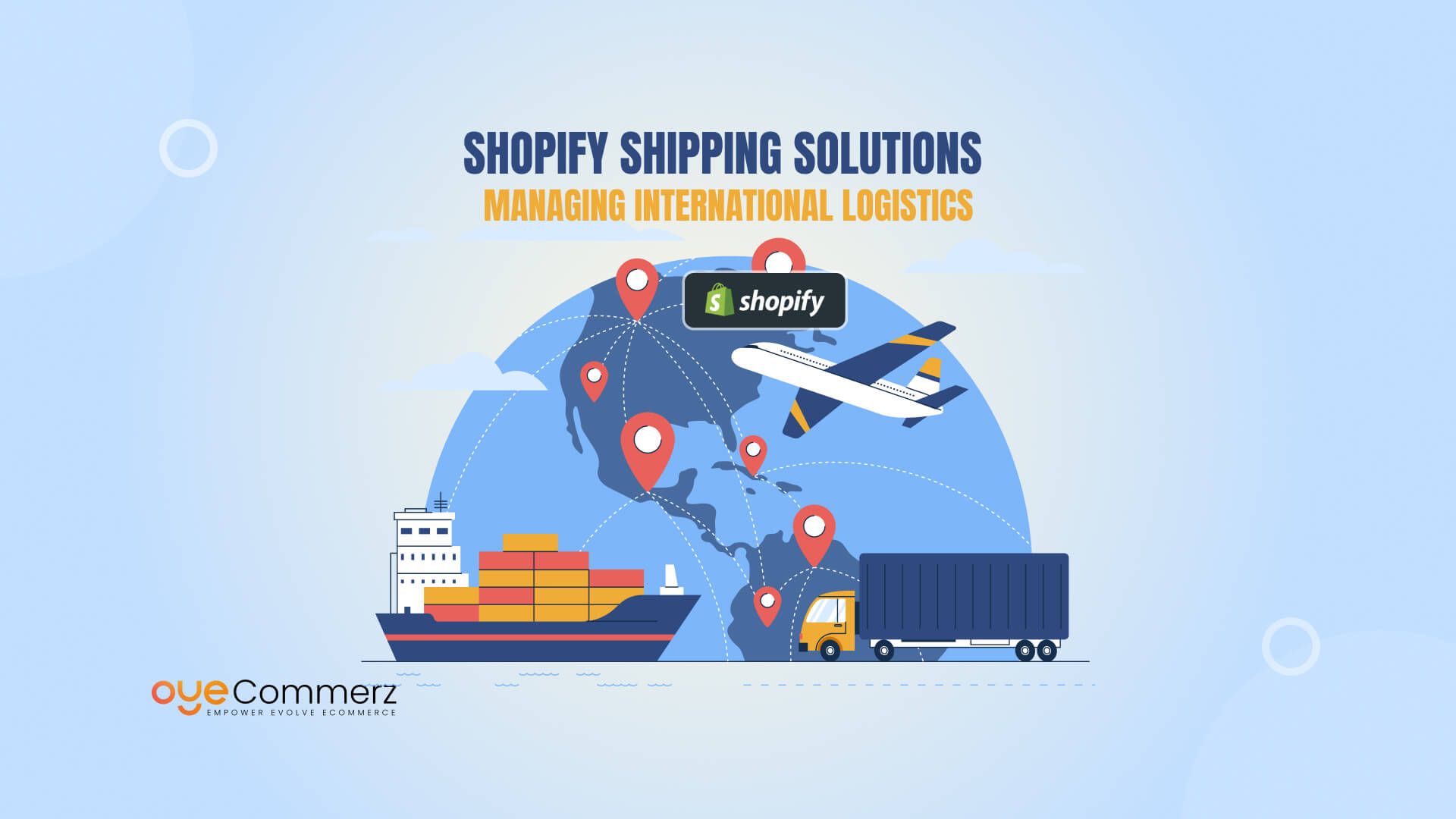Did you know that global ecommerce sales are expected to surpass $7.4 trillion by 2025, growing at over 20% annually? Yet, over 60% of online merchants report shipping challenges as their biggest barrier to international expansion.
Managing cross-border logistics on Shopify can be daunting, rising shipping costs, customs complexities, and unpredictable delivery times often disrupt customer satisfaction and profit margins. Many Shopify store owners struggle to keep up with carrier integrations and streamline international order fulfillment.
Fortunately, Shopify shipping solutions are designed to tackle these pain points head-on. By automating label creation, simplifying customs management, and offering multi-carrier options, Shopify services empower merchants to navigate global logistics efficiently. If you want to expand your business internationally without the headaches of complicated shipping, Shopify’s shipping solutions are your best ally.
Table of Contents
ToggleThe Problem: Complexities in Managing International Shipping for Shopify Merchants
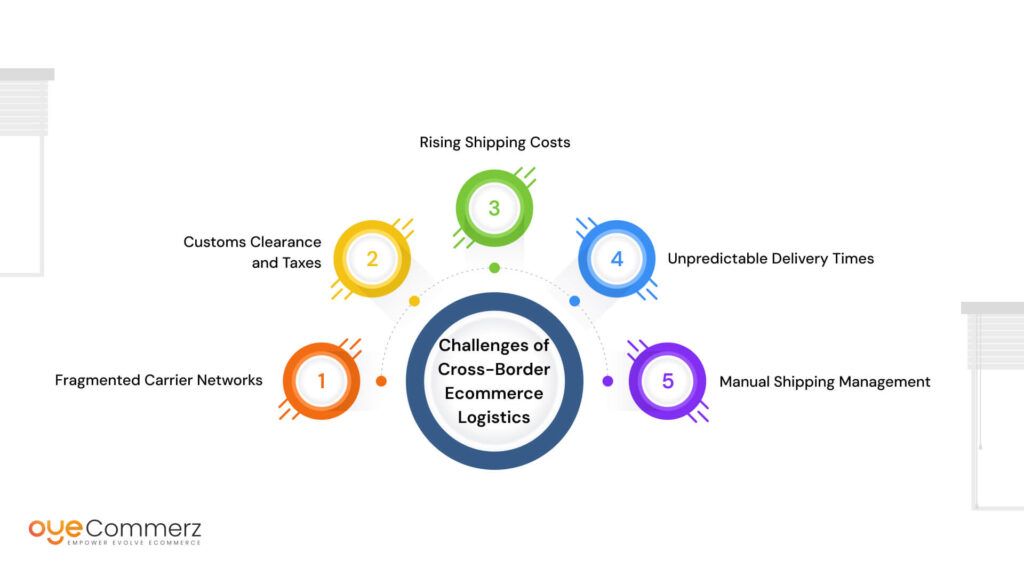
Expanding a Shopify store internationally opens new opportunities but also brings significant logistical challenges. Many merchants underestimate the complexities involved in managing cross-border shipping. These challenges can quickly overwhelm small to medium businesses, leading to inefficiencies and dissatisfied customers.
Understanding the Challenges of Cross-Border Ecommerce Logistics
International shipping is far more complicated than domestic delivery. Here are some core difficulties Shopify merchants face:
- Fragmented Carrier Networks: Unlike domestic shipping, international logistics involve multiple carriers, each with different policies, rates, and delivery speeds. Coordinating between these carriers can be a major headache.
- Customs Clearance and Taxes: Every country has unique import regulations, taxes, and duties. Navigating customs paperwork and compliance requires detailed knowledge and creates delays if mishandled.
- Rising Shipping Costs: Shipping internationally often involves higher fees, fluctuating fuel surcharges, and additional costs for customs handling, making pricing complicated and unpredictable.
- Unpredictable Delivery Times: Cross-border shipments can be delayed due to customs inspections, transit interruptions, or inefficient last-mile delivery, leading to unhappy customers.
- Manual Shipping Management: Without automation, merchants must manually create shipping labels, calculate rates, and track shipments. This process wastes time and increases the risk of errors and missed shipments.
Why These Problems Hinder Global Growth
Inefficient international shipping does more harm than just operational headaches. The real cost comes in lost business and damaged reputations:
- Lost Sales: Customers expect transparent shipping costs and reliable delivery. If shipping fees seem excessive or delivery times uncertain, many abandon their carts.
- Damaged Brand Reputation: Negative shipping experiences result in poor reviews and decreased customer loyalty, which are hard to recover from.
- Eroded Profit Margins: High shipping expenses and manual management eat into profits, making global expansion financially unsustainable for many Shopify merchants.
In short, without effective international logistics solutions, Shopify stores struggle to scale globally and boost their international sales while meeting customer expectations.
Agitating the Problem: The Real Impact of Inefficient Shipping Solutions
Shipping isn’t just about moving products, it’s about protecting revenue, retaining customers, and maintaining brand integrity. For Shopify merchants aiming for global expansion, poor shipping solutions often create more damage than initially anticipated.
Shipping Delays and Hidden Costs That Hurt Your Business
When international shipping lacks clarity and efficiency, the ripple effects are substantial. Delays, inconsistent costs, and vague delivery expectations all contribute to a negative customer experience, and that impacts your bottom line.
- Increased Return Rates & Complaints: Customers today expect reliable, transparent, and fast delivery. Shipping delays or unexpected fees lead to dissatisfaction, poor reviews, and higher product return rates.
- Lost Competitive Advantage: In the fast-paced global market, your competitors are likely offering faster and more affordable international shipping options. If your Shopify store can’t match those expectations, customers will move on quickly.
- Operational Chaos: Without streamlined international logistics, your team spends more time managing shipping issues and less time focusing on growth and innovation.
Complex Customs Procedures and Compliance Risks
Navigating international regulations is not only time-consuming, it’s risky. One error in customs documentation or tariff classification can cost merchants more than just money.
- Delayed Shipments: Packages frequently get held at borders due to incomplete forms, inaccurate HS codes, or under declared values, frustrating both merchants and customers.
- Fines and Legal Liabilities: Non-compliance with import/export regulations may result in penalties or even product seizures, particularly for merchants scaling without expert guidance.
- Reputation Damage: Recurring customs issues harm the credibility of your Shopify brand in foreign markets.
Without the right shipping solutions, Shopify merchants remain exposed to both operational and reputational risks. These issues don’t just slow growth, they stall it entirely.
The Solution: Leveraging Shopify Shipping Solutions for Seamless International Logistics
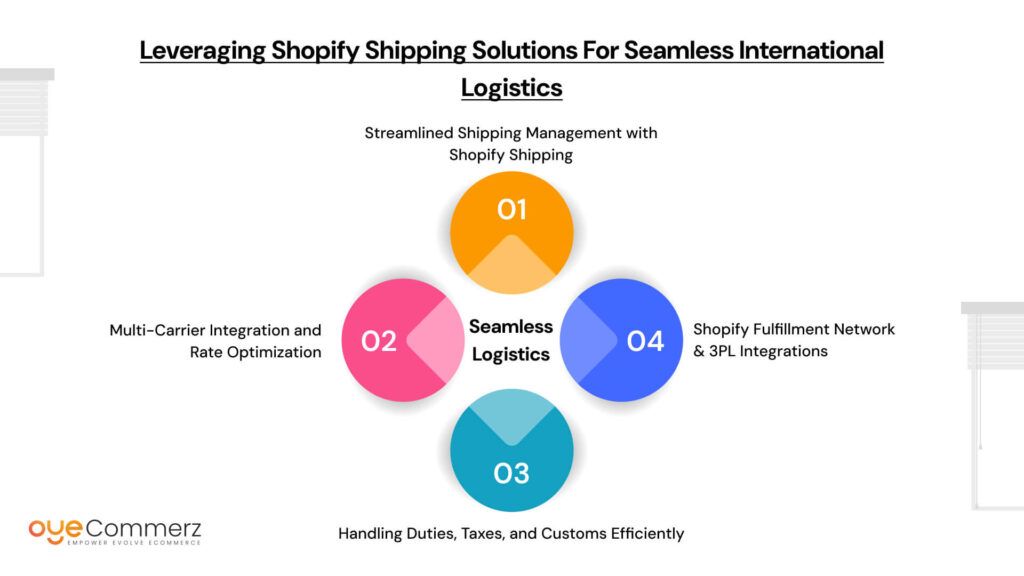
After grappling with shipping inefficiencies, Shopify merchants are now turning to built-in shipping solutions to streamline their international logistics. Shopify offers a robust ecosystem designed to simplify fulfillment, reduce errors, and deliver a superior customer experience worldwide.
Streamlined Shipping Management with Shopify Shipping
Shopify Shipping brings all logistics operations under one roof, no switching between platforms or third-party tools.
- Centralized Dashboard: Merchants can manage label printing, shipment tracking, and carrier integration from a single interface, saving time and minimizing errors.
- Automated Rate & Label Generation: Real-time shipping rates and auto-generated labels eliminate manual calculations and reduce shipping mishaps. This automation lowers processing time and enhances operational efficiency.
- Fewer Errors, Faster Fulfillment: Automation means fewer mistakes and quicker turnarounds, creating a smooth post-purchase experience for international customers.
Multi-Carrier Integration and Rate Optimization
One of Shopify’s strengths lies in its multi-carrier flexibility. Shopify merchants can access top international shipping carriers directly from the admin panel.
- Competitive Shipping Rates: Shopify negotiates bulk discounts with major global couriers, helping merchants save on international shipping.
- Dynamic Carrier Selection: Choose the most cost-effective and fastest carrier for each shipment. This feature balances delivery speed with budget control, key to customer satisfaction and profitability.
Handling Duties, Taxes, and Customs Efficiently
Customs compliance is a major pain point in cross-border ecommerce. Shopify addresses this with precision tools.
- Built-In Duties & Taxes Calculators: Accurately estimate costs upfront, preventing surprise charges for customers.
- Delivered Duty Paid (DDP) Options: Merchants can cover duties at checkout, making the shopping process seamless and transparent. This builds trust and boosts conversion rates globally.
Shopify Fulfillment Network & 3PL Integrations
Fast delivery is critical in ecommerce. Shopify’s fulfillment capabilities ensure merchants meet that demand.
- Distributed Warehousing: Products can be stored closer to international customers, reducing shipping time significantly.
- Third-Party Logistics (3PL) Integration: Shopify connects seamlessly with top 3PL partners, enabling businesses to scale effortlessly without in-house logistics infrastructure.
By leveraging these intelligent Shopify shipping solutions, merchants gain a reliable, scalable framework for efficient global operations, without compromising on cost or customer experience.
Practical Steps to Manage International Logistics Effectively on Shopify
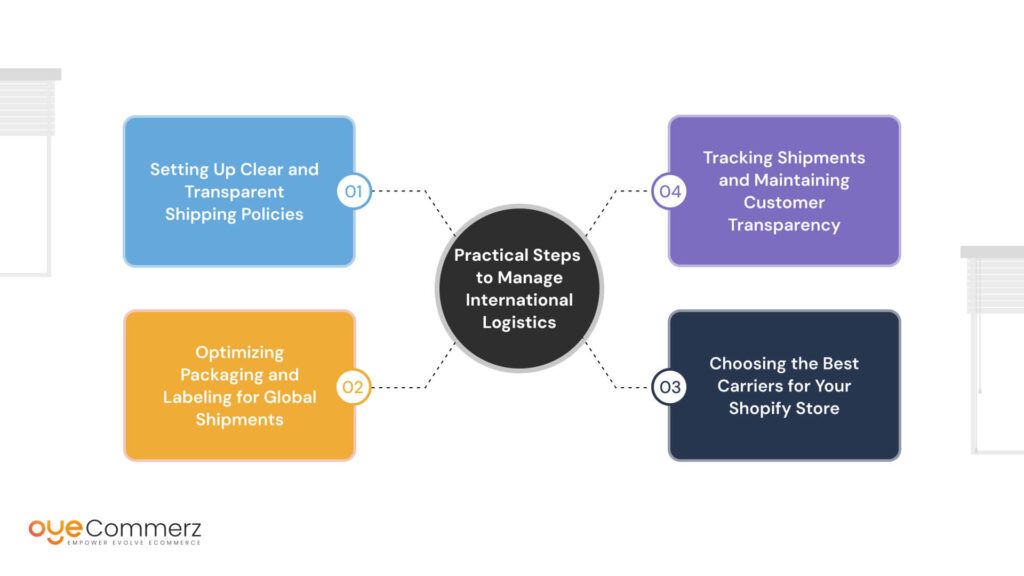
Efficient international logistics require more than a plug-and-play approach. Even with advanced Shopify shipping solutions, merchants must take practical, well-planned steps to ensure every part of the shipping journey runs smoothly. Here’s how to put theory into action and build a shipping strategy that enhances both efficiency and customer satisfaction.
Setting Up Clear and Transparent Shipping Policies
Start by eliminating confusion. Transparent shipping policies set expectations and reduce the likelihood of disputes or abandoned carts.
- Detail Shipping Costs and Timelines: Clearly outline your domestic and international shipping rates, estimated delivery windows, and potential delays. Use Shopify’s built-in features to automatically calculate rates based on regions.
- Inform on Customs Duties and Taxes: Include a clear explanation of how duties and taxes are handled. Whether you offer Delivered Duty Paid (DDP) or Delivered Duty Unpaid (DDU), transparency avoids customer frustration.
- Place Policies Strategically: Add your policies on product pages, during checkout, and within confirmation emails to ensure visibility.
Setting expectations early makes your shipping solutions more effective and builds trust with global customers.
Optimizing Packaging and Labeling for Global Shipments
Packaging is more than aesthetics, it’s about compliance and protection during transit.
- Use Durable, Lightweight Materials: Reduce damage risks while keeping shipping costs down. Light packaging also supports eco-friendly practices and lowers carbon emissions.
- Label According to International Standards: Ensure that shipping labels, barcodes, and customs documents are properly placed and include accurate product details, values, and HS codes.
- Include Return Labels When Possible: A prepaid return label can improve the customer experience and simplify reverse logistics across borders.
Well-packaged products enhance your brand perception and reduce costs related to damage or non-compliance penalties.
Choosing the Best Carriers for Your Shopify Store
Not all carriers serve every region equally. Choosing the right logistics partner is crucial for success in international ecommerce.
- Compare Speed vs. Cost: Some customers prioritize fast delivery, others want affordability. Use Shopify’s multi-carrier integration to compare both.
- Evaluate Reliability and Support: Choose carriers with strong international reputations, tracking accuracy, and responsive customer service.
- Geographic Strengths Matter: Consider each carrier’s coverage and performance in your key markets.
Shopify merchants using optimized shipping solutions can dynamically assign carriers based on criteria like weight, speed, and cost, improving both efficiency and user experience.
Tracking Shipments and Maintaining Customer Transparency
Customers expect full visibility once their order is placed. Real-time tracking reduces anxiety and increases satisfaction.
- Use Shopify-Compatible Tracking Apps: Tools like AfterShip or Tracktor integrate seamlessly and automate status updates directly to the customer.
- Send Notifications at Key Milestones: Inform customers when the order is shipped, out for delivery, and delivered.
- Be Proactive with Delays: If a delay occurs, communicate it immediately along with the revised timeline.
A transparent post-purchase experience reduces complaints, boosts loyalty, and strengthens your reputation in the global market.
By following these actionable steps, Shopify merchants not only improve delivery efficiency but also turn logistics into a competitive edge. Combined with powerful Shopify shipping solutions, these practices build operational consistency and international customer trust.
Enhancing International Shipping with Shopify Apps and Automation
Scaling international logistics efficiently requires more than basic shipping tools. With the right Shopify apps and automation, merchants can streamline operations, reduce costs, and elevate customer satisfaction. These advanced Shopify shipping solutions integrate seamlessly to optimize each stage of fulfillment.
Top Shopify Apps for Shipping and Logistics Automation
The Shopify App Store offers a variety of logistics tools designed specifically for ecommerce merchants shipping globally. These apps eliminate repetitive manual tasks and reduce the chances of human error.
- Batch Label Printing: Tools like ShipStation and Easyship enable high-volume sellers to print multiple labels at once, saving hours during peak order periods.
- Customs Documentation: Apps like Zonos and DHL Express Commerce automatically generate customs forms and declare item values, helping merchants stay compliant with international regulations.
- Integrated Tracking: Solutions like Tracktor provide real-time shipment visibility, automatically syncing updates with customer emails and dashboards for a transparent post-purchase experience.
- Smart Rate Selection: Many apps dynamically select the most cost-effective carrier based on order size, destination, and delivery speed.
Using these tools helps Shopify merchants deliver faster and more reliably while keeping operations lean and compliant.
Leveraging Data Analytics to Reduce Shipping Costs
Data is a powerful asset in logistics. Shopify’s shipping ecosystem allows merchants to collect and evaluate performance metrics across carriers and regions.
- Analyze Delivery Times and Costs: Regularly track how long deliveries take and which routes or carriers incur the most cost.
- Refine Shipping Zones and Rates: Use analytics to create efficient zones, reducing transit time and optimizing price tiers.
- Minimize Returns: Identifying patterns in returned items can reveal packaging or carrier issues that need improvement.
When paired with automated shipping solutions, these insights empower merchants to make smarter decisions and scale cross-border logistics efficiently.
Measuring Success: Key Shipping Metrics Every Shopify Merchant Should Track
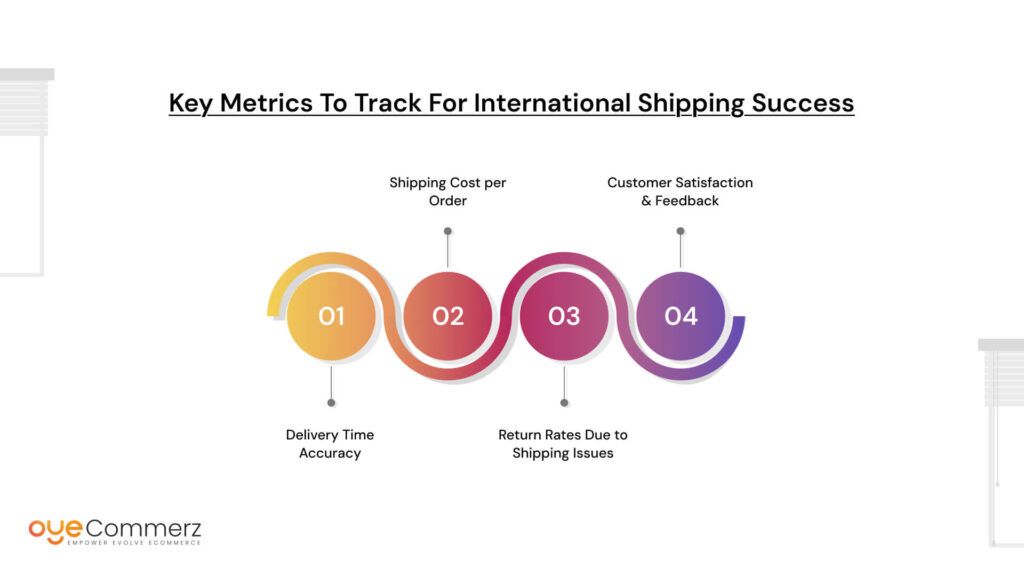
Shipping is more than just getting packages from point A to point B, it’s a key driver of customer satisfaction and business profitability. For Shopify merchants managing international logistics, tracking the right performance metrics is essential. With built-in tools and reporting features, Shopify shipping solutions make it easier to monitor and optimize operations over time.
Key Metrics to Track for International Shipping Success
- Delivery Time Accuracy
Customers expect timely deliveries, especially with international orders. Tracking the percentage of orders delivered on or before the promised date helps evaluate carrier performance and identify delays. Missed deadlines can damage your brand and increase support costs. - Shipping Cost per Order
A critical metric that directly impacts your margins. Monitor how much you’re spending per order across different regions and carriers. Look for opportunities to consolidate shipments, optimize packaging, or renegotiate rates. - Return Rates Due to Shipping Issues
Returns caused by damaged goods, late deliveries, or incorrect items are costly. Segmenting return data by shipping reason helps identify patterns and prevent repeat issues through better packaging, labeling, or carrier selection. - Customer Satisfaction & Feedback
Customer reviews and post-purchase surveys often highlight shipping performance. Tracking ratings and feedback related to delivery speed, packaging quality, and communication helps fine-tune the logistics experience.
How Shopify Helps You Track These KPIs
Shopify provides merchants with real-time dashboards and custom reports to analyze fulfillment and shipping performance. Merchants can:
- Use filters to break down data by product, location, or carrier.
- Track trends over time to identify improvement areas.
- Sync with shipping apps for consolidated reporting.
By leveraging these metrics within your Shopify shipping solutions, you can make data-driven decisions that enhance international logistics, reduce costs, and build long-term customer trust.
Future-Proofing Your Global Shipping Strategy with Shopify
As ecommerce evolves, so do customer expectations, and global shipping must keep pace. For Shopify merchants, staying competitive means not only solving today’s logistics challenges but also preparing for tomorrow. With Shopify shipping solutions, businesses can adopt forward-thinking strategies that embrace innovation and scalability.
Emerging Technologies Impacting Ecommerce Shipping
The future of shipping is being shaped by groundbreaking technologies that enhance visibility, speed, and efficiency:
- Artificial Intelligence (AI): AI-powered algorithms are now predicting the most cost-effective shipping routes, optimizing delivery times, and even automating customer updates.
- Automation & Robotics: From smart warehouses to automated order sorting, automation reduces human error and accelerates order fulfillment, especially crucial for international logistics.
- Blockchain: Increasingly used to provide secure, tamper-proof records of shipment data, blockchain enhances transparency in the cross-border supply chain. This is particularly valuable in managing customs compliance and product authenticity.
Merchants who integrate these innovations will see significant reductions in costs and improved customer trust through greater delivery accuracy and traceability.
Shopify’s Continuous Enhancements in Shipping Solutions
Shopify continues to evolve its shipping infrastructure to meet the growing needs of global merchants:
- Smarter Carrier Integrations: Shopify is expanding partnerships with international carriers for better rate transparency and delivery coverage.
- Enhanced Fulfillment Options: Through the Shopify Fulfillment Network and third-party integrations, merchants gain access to smarter inventory distribution and faster delivery models.
- Improved Customs Tools: Shopify is rolling out more robust tools for handling duties, taxes, and harmonized codes, reducing compliance risks.
By aligning your strategy with these ongoing innovations, you ensure your Shopify shipping solutions remain future-ready, equipped to deliver a seamless and scalable international ecommerce experience.
Helpful Shipping Solutions Comparison Table
Choosing the right shipping method is critical for ensuring a smooth and profitable international ecommerce experience. Shopify merchants often find themselves weighing between using Shopify Shipping, managing logistics manually, or integrating with a third-party logistics (3PL) provider. Each solution offers unique benefits and drawbacks.
To simplify your decision-making process, here’s a clear, side-by-side comparison of key shipping features. This overview helps illustrate how Shopify shipping solutions stand out for automation, cost-efficiency, and scalability, especially for global merchants seeking growth.
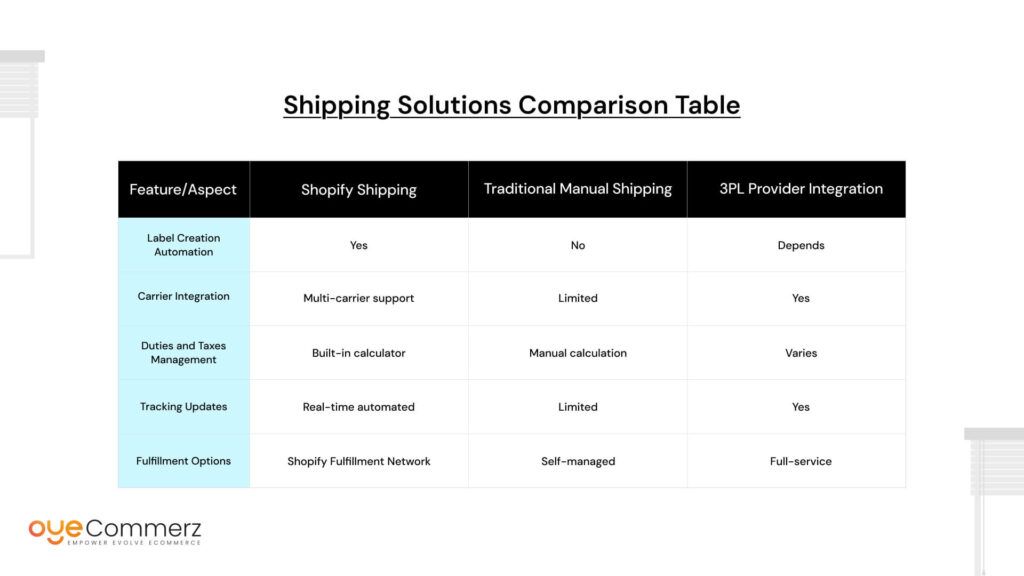
Why This Matters
- Automation reduces manual workload, cutting down errors and saving time.
- Built-in tools in Shopify help manage international taxes, duties, and customs documentation seamlessly.
- 3PLs provide scalability, but can be expensive and require careful vetting.
- Manual processes are costlier long-term, especially as volume grows.
Understanding these differences ensures you can align your logistics setup with your business goals. Whether you opt for Shopify’s native tools or expand with a 3PL, using this table can help you make informed, future-proof choices for your global ecommerce shipping strategy.
Ready to streamline your global shipping with Shopify?
At OyeCommerz, we specialize in setting up powerful, automated shipping solutions that take the guesswork out of international logistics. From multi-carrier integration to custom Shopify store support, we ensure your ecommerce business scales globally, without the hassle.
Partner with OyeCommerz and ship smarter, faster, and farther.
Contact to Migrate your Site to Shopify Now
Conclusion
Efficient shipping solutions are no longer optional, they’re essential for thriving in today’s global ecommerce landscape. As international markets expand, the complexities of cross-border logistics can slow down growth if not managed smartly.
By adopting Shopify shipping solutions, merchants gain access to automated tools, real-time tracking, and seamless multi-carrier integrations that simplify international logistics. These features don’t just streamline operations, they also enhance customer satisfaction and reduce overhead.
To stay competitive, Shopify merchants must leverage these powerful tools to optimize fulfillment, manage customs with ease, and scale efficiently. Embrace the full potential of Shopify services and watch your international sales journey become smoother, faster, and more profitable.
Frequently Asked Questions
Yes, Shopify offers logistics support through its Shopify Fulfillment Network and partnerships with third-party logistics providers.
It’s the coordination of shipping, customs, and delivery processes to efficiently move goods across international borders.
Yes, Shopify provides tools for shipping management, including label printing, tracking, and carrier integrations.
Shopify shipping is available in select countries like the US, Canada, Australia, and the UK, with expanding coverage over time.
Costs vary based on carrier rates, package size, destination, and Shopify plan; discounted rates are available through Shopify Shipping.

